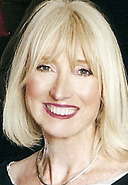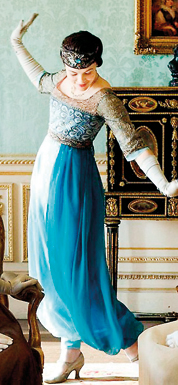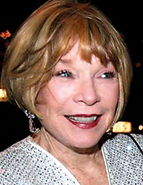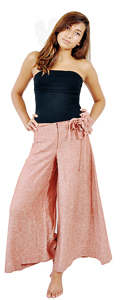Dressing Downton
Julian Fellowes, the creator of the acclaimed British period drama Downton Abbey, once called his costume designer Susannah Buxton a “sculptress in cloth”. Her designs for the show’s first two seasons won her an Emmy Award for ‘Outstanding Costumes for a Series’ in 2011 (one of the record breaking 27 Emmy’s the show has garnered) and a nomination in 2012. For the show, Susannah decked out the aristocratic Crawley women in gorgeous vintage finery but some of her most successful work was her most inconspicuous. (You may have barely noticed what Downton’s staff wore, but be assured they were historically accurate down to the last apron.)

Susannah Buxton. Pic c ourtesy Milk Publicity
Clothed in Susannah’s designs, the inhabitants of Downton lived through the early 1900s: they lost an heir in the sinking of the Titanic and sent the new one off to fight in the trenches of WWI; their women became suffragettes, their men revolutionaries but Downton survived – the tumult and change of the post-war years still ahead.
Susannah, like everyone else associated with it, was somewhat taken aback by the enthusiasm with which viewers across the world greeted Downton Abbey. Still, having been in the business for 25 years, she found herself well able to cope with the challenge the show represented and still have a personal life: “I have been working long hours on film sets all my working life…they [her family] get used to it,” she told the Sunday Times in an email. “The difference really has been the huge publicity, which none of us could begin to have predicted.”
Its wonderful cast aside (who could hope to rival Maggie Smith as the indomitable Dowager Countess?) much of the show’s appeal lay in its look – the stately house ensconced in rolling fields and of course the romantic, vintage wardrobe that defined the series in millions of viewers’ minds; but before they appeared on screen, Susannah had to make sure her actors were completely at ease.
“The costume designer is the first person they work with when they start the project and it is very important for them and us to work together…I prefer to work with them and try never to put someone in a costume they feel unhappy with.”
To create her pieces, Susannah pored over photographic archives, costume history books, paintings and museum collections, but was also inspired by the élan of fashion icons like Coco Chanel and that gravitas of Queen Mary, whose Royal wardrobe she drew upon for inspiration when clothing the Dowager Countess of Grantham.

Lady Sybil shows off her harem pants: There was a tear behind
“The main challenge was finding fabrics suitable for making the costumes, much of the early cloth is not available now or is massively expensive,” Susannah reveals. “The panels of beading and embroidery, and trimmings had to be sourced and I usually used original pieces that often had to be restored.” As a result of working with fragile vintage clothing on the sets of Downton, the wardrobe department had to deal with more than one crisis.
Fans will remember when Lady Sybil Grantham’s rebellion took the form of a pair of scandalous (but beautiful) blue harem pants, yet what they didn’t see was the tear down the back. “The original fabric for the bodice of Sybil’s harem dress split right down the back on the first take, it had to be held together with clips and replaced when the camera turned around and the back would have been seen!” remembers Susannah. “Often the actresses would put their heel through the bottom of silk dresses… the girls get very skilled at fast and invisible mending.”
These off-screen disasters were perhaps inevitable when you consider that Susannah would have to make anywhere between 150 to 200 costumes per episode – “more if there was a large crowd of supporting actors,” she says. The costumes would be seen together on screen, and that meant Susannah would have to consider the actors and the settings in which they would appear together.
“I have to consider each scene like a frame in a film,” says Susannah. “All the costumes have to work together and the emphasis is often on one or two. As they hold the camera time, then their costume helps emphasise the drama of the scene, hopefully.”
In a family that insists on dressing formally for dinner, costume changes were frequent, and would also have to mimic the change in the seasons – but it wasn’t fashion as much as the development of the character that dictated what he or she wore. “I worked with the production designer to produce a colour palette across the series,” says Susannah. “I also chose different colours and tones for each actress to help reflect their personality, and sometimes to underline a dramatic moment.”
When it came to the three Crawley sisters, Lady Mary, Lady Sybil and Lady Edith, Susannah’s costumes added another layer to the dialogue as it were. She deliberately kept the other two in mind while designing for one. Sybil, who had a bohemian air about her (and would later run away with the chauffeur) wasn’t particularly fashion conscious, in stark contrast to Mary, who like her mother, enjoyed shopping in high end London boutiques. While dressing Edith, who lacking in confidence always sees herself standing ignored in the shadow cast by her beautiful sisters, Susannah chose to be unpredictable. Sometimes Edith was stunning, sometimes gawky – if for no other reason than to provide Mary with an excuse to mock her. “I hope that the very real differences between the two sisters [Mary and Edith] reflected in the clothes, and I also design within a colour range for each character,” says Susannah.
To design for Downton, Susannah had to do her homework. “This period has been called ‘the start of modern fashion’ and was very interesting to work on as it is rarely covered in drama. This tends to go from Edwardian to the First World War and then into the Twenties,” she reflects. Politics and fashion were inextricably intertwined: “In the few years before the war, after King Edward had died, it was a time of political turmoil, particularly for women who are marching for the vote and more equality. In fashion terms the restricting corsets and hourglass shape had given way to a slim boyish silhouette, long straight skirts, high waists and large hats.”
Susannah’s success on the show brought with it plaudits, including praise from the editor of Vogue, Anna Wintour, who chose to feature Susannah’s designs in the photo spread ‘Edwardian Inspiration’. The designer’s time with the show came to end when she left before its third season, handing over the reins to her then assistant Caroline McCall. “I left because of new projects and I felt, as the era moved on, that the series would benefit from new eyes designing it,” she said, adding that a possible feature film and several smaller projects lay ahead for her.
In the meantime, judging by a great (both sartorially and otherwise) third season, Downton is likely to receive another Emmy nomination and perhaps even a win in 2013 – its wonderful costumes both complementing and competing with the cast for acclaim.
Follow @timesonlinelk
comments powered by Disqus





















